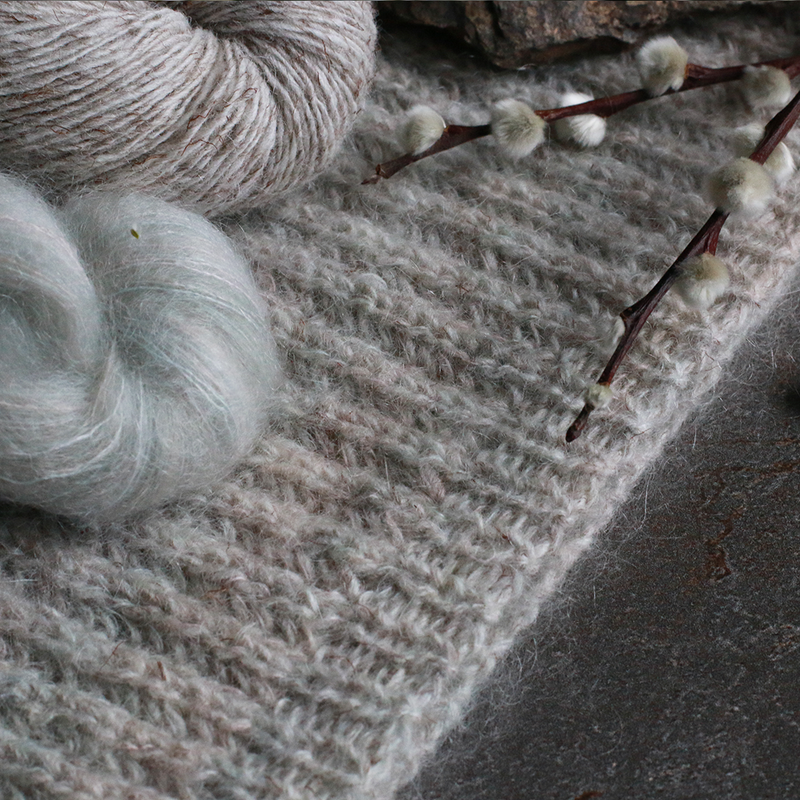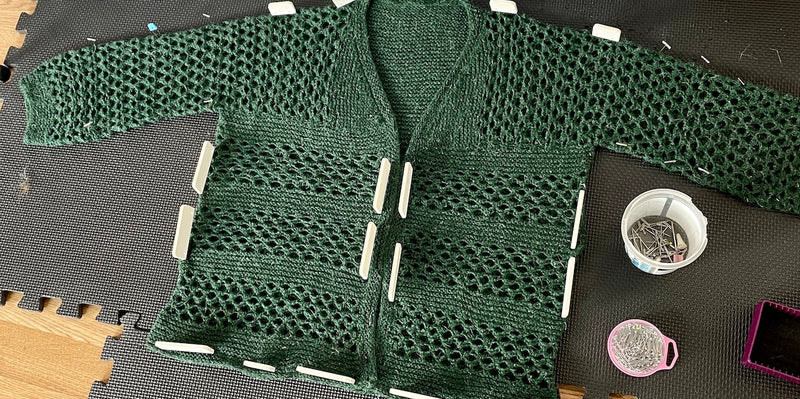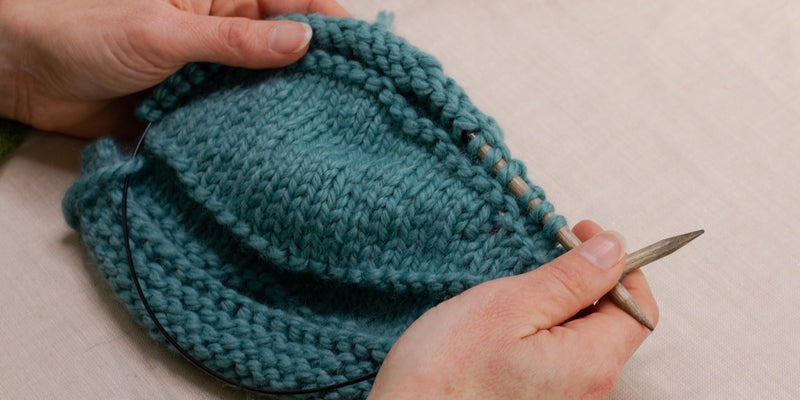
The sweater is knit from the top down with raglan shoulder shaping. I use a modified version of the raglan to ensure that neck, body and sleeve are all the right size especially as sizes get bigger. If you don’t do that you can end up with sleeves that are far too larger for bigger sizes! I’ve put a chart together that you can use with the pattern that gives the stitch count at every section for front/back/sleeves. I find this really useful as a check for myself along the way.
Most of the techniques used in the pattern are fairly standard; the two that are a little different I’ve detailed below. The first is the neck finishing and the second is working the stripes (ideally jogless!).
HOW TO WORK THE NECK

While the sweater is loose and flowing you still want to make sure that the neck holds it’s shape! It is knit from the top down but when the sweater was finished I went back to work the neck.
It starts by picking up stitches all around the neck opening with the contrasting yarn. I usually begin at the centre of the back as that way any joins will be hidden at the back. Now I knit 3 rounds.
Once this is done I switch to a smaller needle size and knit another 3 rounds. The reason to change to the smaller needle size is due to the way the neck will fold. You are going to fold the neck inside so you want the inside ‘layer’ to be smaller than the outer one.
When all the knitting is finished you now want to cast-off. This is a special cast-off that also joins the fold of the neck edging.
If you take a look inside your work you’ll see very clearly the bright green ‘loop’s from where you picked up your edge stitches. You will use these to fold and join the neck edging.
Step 1
Now with your right needle, pick up a loop of the contrasting color 6 rows below next stitch on left needle.
Step 2
Slip the picked-up stitch to left needle and knit it together with the following stitch on the needle.
Step 3
Pick up loop 6 rows below next stitch and knit together with following stitch on left needle.
Step 4
Lift the second loop on the RH needle over the first to bind off one stitch.
Repeat steps 3-4 until all stitches have been bound off.
So you can see with each step what you are doing is picking up that loop from the cast-on row (easy to spot as it’s colour coded with a different colour!) putting it on the left needle and knitting the loop with the next stitch. From there you are just working your bind-off as a standard bind-off.
JOGLESS STRIPES
This sweater has narrow stripes worked every 12 rounds. It’s important when working stripes to put the start of your stripe somewhere unobtrusive. The start of the round is at the left front shoulder which doesn’t work for the start of the new colour (I tried and it was awful!) so I start the new colour at the centre of the back. I’m not the greatest in avoiding the ‘jog’ you get with a colour stripe in circular knitting but there were a couple of things I did that helped.
When the stripe is just 2 rounds there’s no need to break the main colour for the stripe. However this did cause me problems when I wasn’t careful. When you pick the main colour up afterwards you will try to pull it snuggly. You need to avoid this at all costs as it create a distorted stitch. In fact I’ve suggested wrapping the yarn an extra time for the first stitch to make sure you have some slack in the yarn.
The method I use for a jogless join is this; First I knit a single round in the new colour, then when you start the next round you lift the first stitch of the round below (it will be in the old colour), place it on the left needle and knit it together with the new colour.
The combination of these 2 methods should help even out the jogs from the stripes and if they don’t you can always just embrace the jog as a design feature!
WANT TO TRY THE YARN?
You can find kits for Pistachio Saffron here in the colour shown (Kitten Fluff & Frog on The Wall). If you want to try a different colour you can purchase the yarn needed here.






